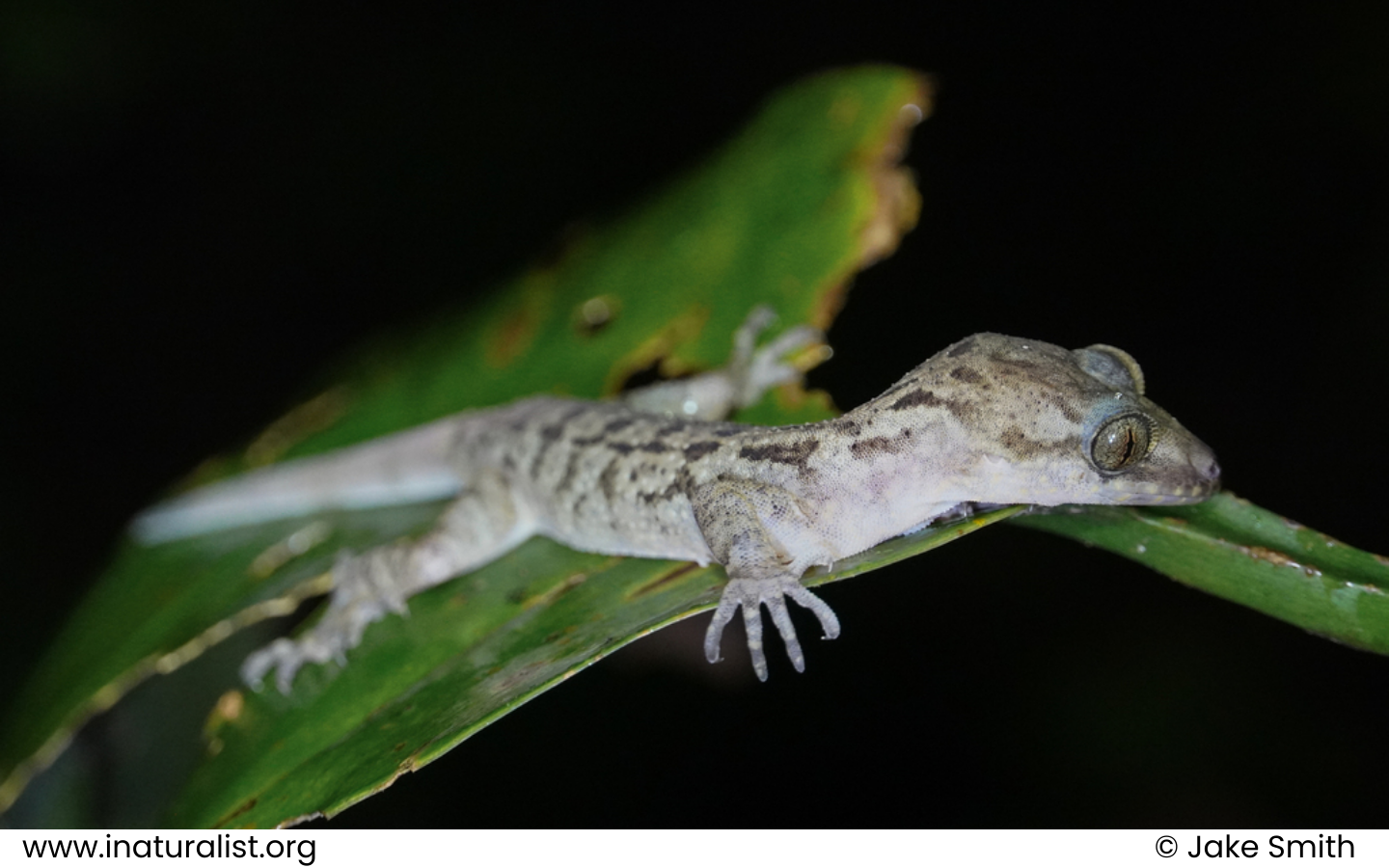
Science name: Cyrtodactylus taynguyenensis – Nguyen, Le, Tran, Orlov, Lathrop, Macculloch, Le, Jin, Nguyen, Nguyen, Hoang, Che, Murphy & Zhang, 2013
Taxonomic: Animalia>> Chordata>> Reptilia>> Squamata >> Gekkonidae >> taynguyenensis
Species status: Endemic ; IUCN status: LC (Least Concern)
Description:
Physical characteristics:
Cyrtodactylus taynguyenensis is a medium-sized gecko with a snout-vent length (SVL) ranging from 60 to 85 mm. The body is moderately robust, and the tail is longer than the body, with small, non-enlarged subcaudal scales. The species lacks enlarged femoral scales. Males have six precloacal pores arranged in a “Λ” (lambda) formation, while the females lack these pores. It has 8–9 upper and lower labial scales. The subdigital lamellae under the fourth toe number between 17 and 21, and the ventral scales are arranged in 42–49 rows.
Coloration and Appearance:
The dorsal pattern consists of dark brown bands that contrast with the paler background of the body. These bands are irregular in shape, creating a distinctive pattern on the back and tail. The head has similar dark brown markings, with noticeable stripes extending from the snout to the neck.
Distribution and habitat:
Elevation: Found at elevations between 700 and 900 meters above sea level.
Area: Cyrtodactylus taynguyenensis is endemic to Vietnam, specifically recorded in the vicinity of Krong Pa Village, K’Bang District, Gia Lai Province, within the Kong Ka Kinh protected area. It is native to the Central Highlands region, known as Tây Nguyên.
Habitat: This species primarily inhabits mature rainforests with a closed canopy and a multi-level structure. It has also been observed adapting to various other habitat types, including areas near coffee and dry rice plantations. The geckos are nocturnal, found at night on large rocks or tree trunks near streams or dry riverbeds.
Behaviour and ecology:
Lifestyle:
The species is nocturnal, actively foraging at night. It prefers the surfaces of rocks and large tree trunks near water bodies, such as streams or dry riverbeds, within its forest habitat.
Reproduction:
The species is oviparous, laying eggs in crevices or similar sheltered environments during the breeding season.
Diet:
Cyrtodactylus taynguyenensis feeds on small invertebrates, which it finds in the forested areas it inhabits.
Conservation and status:
IUCN Red List Category and Criteria:
Listed as Least Concern (LC) due to its stable population and occurrence within a protected area. However, the species is only known from its original description, so further research is necessary to monitor population trends.
Threats:
Despite its stable population, the species’ habitat could be at risk due to deforestation and agricultural expansion. The surrounding area of Krong Pa Village is dominated by coffee and rice plantations, which may pose a threat to its natural habitat.
Conservation actions:
The species benefits from being within the Kong Ka Kinh protected area, which helps mitigate the impact of habitat loss. Ongoing conservation efforts are necessary to preserve the mature rainforests where it thrives.
Crocodile Trail – The Best Birding Trail in Cat Tien National Park
If you’re a birder or nature photographer planning a trip to Vietnam, few places offer [...]
Cong Troi Trail – Top 1 Dalat Plateau Birding Trail Experience
If you’re a birder or nature photographer planning a trip to Vietnam’s Central Highlands, the [...]
How to Identify the Greater Sand Plover, Tibetan Sand Plover and Siberian Sand Plover
Identification Differences within the Sand Plover Complex: The sand plover group, which was traditionally divided [...]
Highlights of Cat Tien National Park Reptiles and Amphibian Endemics
Spanning over 71,350 hectares of tropical forests, grasslands, and wetlands, Cat Tien National Park is [...]
Highlights of Cat Tien National Park Mammals in a World Biosphere Reserve
In addition to reptiles and birds, Cat Tien National Park is also rich in mammals, [...]
Kontum Plateau Endemic and Highlight bird
Kontum Plateau Endemic And Highlight Bird species like Chestnut-eared Laughingthrush and top birding routes while [...]